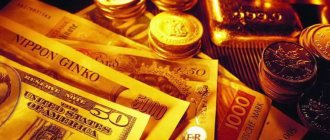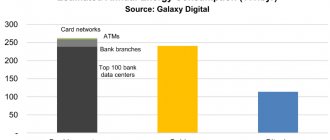The US decided to print another 2 trillion dollars. What does this threaten the world with?
“The United States of America has detonated an atomic financial bomb!” - said billionaire Igor Rybakov in his video blog. We are talking about injecting $2 trillion into the American economy under the slogan of fighting the crisis—more than Russia’s annual GDP.
What will happen now? Will Americans buy up half the world on the cheap? Or will the stalwart dollar collapse under the weight of the hyperinflation that will hit the US? Does it make sense to stock up on American banknotes now? AiF asked experts about this.
How the US prints money
The American state is constantly living in debt. The amount already borrowed by the government is amazing - 23.5 trillion dollars. And now it will increase by another 2 trillion. The US economy doesn't earn that much in a year. But American presidents are not afraid of this. During all the crises that happened in the past, they saved the country by increasing the debt and turning on the printing press.
Article on the topic
Keep or exchange?
What to do with savings in dollars and euros “In 2008-2009, when the global financial crisis broke out, the United States printed 1.7 trillion dollars, and then until mid-2014 - another 2.8 trillion. But annual inflation in the country did not exceed 2%. Why? Because this whole operation was carried out competently and gradually,” says Mikhail Portnoy, director of the Center for Foreign Economic Research at the Institute of the USA and Canada of the Russian Academy of Sciences. - This is what happens now. First, in early March, the US Federal Reserve System (the Fed is an analogue of our Central Bank. - Ed. ) lowered its key rate to zero, and it became unprofitable to keep money in banks: the yield on deposits became negative.
Then, in order to find funds to combat the consequences of the coronavirus, the government will issue government bonds for the same $2 trillion and set payments on them higher than the banks can give. Therefore, investors will be happy to buy these securities. Real labor money will go into the economy, and not “drawn money,” as commentators say, predicting hyperinflation in America. And only later, in order to fill the deficit in the financial market, will the Fed turn on the printing press. At the same time, in order to control the process, the American central bank will print money in portions and pour it into the economy, buying back previously issued bonds and mortgage-backed securities. The Fed also announced the start of this program in March. This guarantees purchasers of government bonds that their investments will definitely not be lost.” Moreover, the dollar is not in danger of collapsing at low oil prices. “The world produces 90 million barrels daily, and 50% of supplies are paid in dollars. Therefore, if a barrel becomes cheaper, for example, by $10, the revenue received by the selling countries falls by $450 million per day. And the dollar exchange rate against other currencies begins to rise. Over the past month, oil prices have more than doubled. And there is no reason for a significant depreciation of the dollar to begin, especially in Russia,” explains Portnoy.
He sees no reason to call what is happening a financial war. “Yes, during market crises competition between companies intensifies. This will happen now: the strong will buy the weaker. But American assets will also be bought up. Of all countries, world capital exploits the US market most actively: every year $300 billion of direct investment alone enters this country from abroad and the same amount leaves.”
Collage AiF/ A. Dorofeev
Will the dollar bubble burst? The expert explained what will happen to the US currency
After it became known that the US Congress had approved a new package of financial assistance to the country's economy, experts began to predict a decline in the dollar. Russiapost columnist Alexander Zapolskis believes that the dollar, on the contrary, will grow, but this “bubble” will soon burst.
He recalled that the collapse of the dollar pyramid was predicted by many analysts back in Soviet times, but since then the dollar has only been growing. According to Zapolskis, what is happening with the American currency is contrary to all financial laws.
“In the framework of five quantitative easing programs alone, from December 2008 to October 2014, the Federal Reserve drew 4.66 trillion candy wrappers,” the observer recalled.
Considering that the nominal GDP of the United States in 2008 was 14.7 trillion, and at the end of 2014 it reached 17.3 trillion, no huge inflation was observed. If there was a jump in 2011, then everything returned to normal in 2015.
The money supply in the United States continues to grow: in ten months, 3.68 trillion was created from somewhere, the expert noted. The sources of money, he said, were the Federal Reserve's quantitative easing, as well as emergency assistance to those affected by the pandemic. The authorities have already spent 900 billion on it, and another 300 billion is planned until March 2022. Another reason why there is more money is “bad debts” bought onto the balance sheet of the Fed, which are also monetized.
“This year alone, almost another 4 trillion dollars have been added to the American economy in a year, although previously an increase of 2.5 trillion occurred in no less than 3 years. The nine-week momentum in the US money supply reached 14%,” Zapolskis calculated.
The observer is surprised why such a large financial injection does not lead to the “pool” overflowing. He suggested that there is no hyperinflation in the United States because “inflated” money ultimately does not reach the real economy.
Bankiros.ru
As an example, he cited the capitalization chart of the Nasdaq exchange: October 2022 - 16 trillion, November 2022 - on average about 21 trillion. The New York Stock Exchange has a similar situation: July 2008 – about 15 trillion, January 2022 – almost 23 trillion.
He noted that neither Apple, nor Amazon, nor Google have made “any epoch-making breakthroughs” this year.
“The Fed is inflating a bubble that won’t burst. And he makes money from it. While the rest are swallowing dust in attempts to at least catch up with the leader “in all honesty,” Zapolskis is sure.
This state of affairs cannot continue forever, he warned. According to him, there are two limits to the existence of the Federal Reserve. The first is the size of the US budget revenues. Despite being the largest in the world, tax collection lags behind the rate of growth of public debt. In other words, debts are outpacing the budget.
In addition, debts must be serviced. Now the United States spends more than 4% of its budget on this.
Oil puzzle
For Donald Trump , who has presidential elections in November, it is super important to approach them as the winner of the crisis caused by the coronavirus. Economists at Deutsche Bank calculated that due to strict quarantine in the United States, 15 million workers could be laid off. To soften the blow, the authorities increased benefits for the unemployed and introduced compensation for those whose wages were cut. People with an annual income of up to $75 thousand will receive $1,200 and another $500 for each child - families with children. But the Republican Party also has many voters in the oil industry, which is now suffering from both low prices for fuel raw materials and low demand. For some shale companies, the situation is simply desperate. The storage facilities are full, and in order to free them, they themselves pay extra to buyers for the removal of black gold. A barrel of American WTI oil has fallen in price to $20 in recent days. But the United States is not Russia—the dollar itself does not suffer from this!
Article on the topic
What will happen to the ruble and dollar in April?
Currency Forecast “In some parts of the world, water has become more valuable than oil. This is hitting our oil industry. This is an unacceptable situation for her,” the American president sounded the alarm and on the last day of March announced that the United States would deal with this problem together with Russia and Saudi Arabia. Just the day before, Trump had telephone conversations with Crown Prince Salman and Vladimir Putin .
As a result of the latter, it was decided to begin consultations on the situation in the oil market at the level of energy ministers. “These calls are testing the waters for a mutual compromise between the countries involved in the price war,” believes Stanislav Mitrakhovich, a leading expert at the National Energy Security Foundation and the Financial University under the Government of the Russian Federation. “But it will be difficult to do this, although all oil producers are now losing a lot of money, and even Saudi Arabia’s dumping does not give the desired result. Cheap Saudi oil is simply not reaching buyers now: there are not enough tankers to transport it, and the cost of chartering oil tankers increased by as much as 700% in March. In such a situation, Russia and the Saudis are ready to reduce oil production, but would like the United States to do the same. What's unlikely: American law does not allow the government to order private oil companies to reduce production. That's why Trump has been making contradictory statements on oil issues over the past week. And a new OPEC+ meeting with Russia’s participation was first announced, but then postponed.”
What will happen to oil next? “If no decisions are made, then uncertainty and low quotes will persist for 1–1.5 years, until the participants in the price war exhaust all their financial reserves,” Mitrakhovich predicts. — If production cuts begin again within the framework of OPEC+, then prices may return to $40 2 months after such a decision. But if the coronavirus is not defeated by the summer and demand for oil does not rise, their recovery may be delayed.”
So far the US has not canceled its efforts. Why is it time for Russia to leave OPEC+? More details
Markets reacted positively
Markets reacted positively to news of the agreement, with the S&P 500 index up 1% in trading on Wednesday, The New York Times writes. “Markets are excited about the bill, which contains a record $2 trillion to support the economy,” Stephen Aniston, head of financial markets analytics company Vixcontango.com, told The Financial Times (FT).
If Congress approves the package, it will be the third bill passed in the United States to combat COVID-19. Earlier, Congress voted for a bill providing $8.3 billion to combat the epidemic, including the creation of a vaccine against coronavirus. Lawmakers also backed a $100 billion measure to help those furloughed by COVID-19.
The number of people infected with COVID-19 in the United States is more than 55 thousand, and more than 800 people have died. The most cases are in the states of New York (more than 25.6 thousand) and New Jersey (more than 3.6 thousand), as well as in Washington (more than 2.4 thousand).
To slow the spread of coronavirus, most American states have taken measures to limit social and economic activity. Almost all states have closed schools and suspended the work of bars and restaurants (with the exception of delivery services), and in some states mass gatherings have been prohibited. The strictest measures are in place in California, Illinois, Indiana, Michigan, Ohio, Washington, West Virginia and Wisconsin. Not only schools, bars and restaurants are closed there, but also companies whose activities are not critical to the country. Eight states also have bans on large gatherings and mandatory home quarantine.
What to invest in now?
Meanwhile, on March 31, the Russian Urals grade dropped in price to $13 per barrel. It was worth so little the last time in 1999. What follows from this for the ruble? What should those who would like to save their savings do today?
“The dollar could already be worth 100 rubles. Currency interventions from reserves made by the Bank of Russia have so far kept its official exchange rate below the 80-ruble border. But he will pass it if very low oil prices persist for a long time, says Vasily Konovalov, a partner at the Otkritie Broker investment company. — Investing savings in hard currency in such a situation is more reliable. You just need to do this for a long time, for several years. You should not bet on the fact that you will be able to make money with a guarantee on a jump in the dollar and euro in the coming months. Depending on unpredictable events related to oil and coronavirus, their rate may either rise or fall. And it is better to buy not cash, but dollar-denominated Eurobonds of large Russian and foreign companies, which now promise yields of up to 10% per annum. This can be done through a broker if there are free resources of at least 10 thousand dollars. In relation to other foreign currencies, the dollar also became more expensive in the first weeks of March, because during crises the demand for it grows all over the world. But when Trump announced a two-trillion-dollar injection into the economy, it became clear that there would be no shortage of the dollar, and it began to fall in price. It is predicted that in the near future this decline will be 3-4% against a basket of other world currencies.”
Such a symbolic rollback of the green rate is, of course, not a collapse. As it went down, it will go up. As long as the US economy is the most powerful in the world, nothing terrible threatens the dollar.
What will happen to the exchange rate: expert forecasts
So, in matters related to the dollar exchange rate, very interesting trends are observed. So, unlike the ruble, which is entirely dependent on oil, declining along with it, the dollar, on the contrary, begins to grow.
And since the latest global trends are clearly not in favor of oil, the price of which has fallen on average by 2 times, there is certainly no hope for a rollback of the dollar in the near future. And all because payments for black gold are carried out in dollars, and the more revenue falls, the higher green becomes in relation to other currencies.
This is simple arithmetic, which clearly does not benefit those who are sitting on the oil needle. But the States don’t care, and even benefit from such jumps. Moreover, right now the Americans will have a unique opportunity to buy up the assets of weaker companies, which makes one involuntarily wonder whether this crisis is so disadvantageous for the world’s satellites?
Where to invest your savings
Since Russian oil brands have lost a lot in price, keeping savings in rubles is an extremely risky decision. At least in the long term. Yes, the dollar will still roll back in the range of 3-4%, but these trends will be temporary, so if your immediate plans do not include any large purchases, then it is better to invest in hard currency.
At least, such recommendations are given by experts who are confident that as long as the American economy remains the strongest in the world, the dollar will continue to occupy a leading position in the international foreign exchange market.











